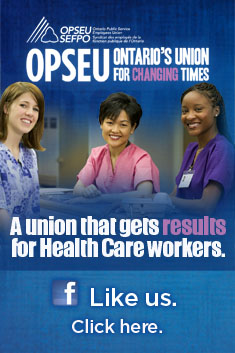Yesterday’s special report by the Office of the Auditor General of Ontario tells us much about the web of for-profit companies established by Ornge and the failure of oversight by the Minister of Health and Long Term Care.
What’s not in the report is likely of even more interest and raises questions about the relationship with other for-profit providers in the health system.
The McGuinty government subscribes heavily to the concept of steering not rowing, but clearly with Ornge there was no steering and the rowing left much to be desired.
The auditor notes: “having an arm’s-length corporation deliver air ambulance services was … consistent with the Ministry’s long-term objective of moving away from direct service delivery, with health care services being provided by external entities accountable to the Ministry.”
Yet the auditor specifically notes not only did the Ministry fail to hold Ornge to account, but that McCarter himself was denied access to critical information thanks to a web for for-profit companies under the Ornge umbrella.
Most of Ornge was really run from these private for-profit entities, leaving both the Ministry and the public in the dark about many issues.
The auditor specifically states he could not gain access to:
• Lists of the shareholders or owners of these entities and what each individual’s proportionate ownership interest was;
• Compensation contracts and bonus arrangements for members of senior management and the board who received compensation from these entities;
• Details around the aircraft manufacturers $4.8 million deal to purchase marketing services from an Ornge subsidiary;
• Records from the entities to justify billings to Ornge for the cost of aviation, purchasing, payroll and accounting services.
• The details of the “Founders Equity Plan” which the auditor states includes “potential monetary benefits for initial shareholders of these entities.”
As more of the health system is hived off to private entities, we question how much real scrutiny will be possible?
Clearly there are critical parts of this story that are missing. If the way these companies are set up bars the Auditor General of Ontario from oversight, how can we ever establish the claims of these private sector providers that they are providing value for money?
We have faced this situation from private for-profit home care agencies for years. While these agencies rely overwhelmingly on public funding through the Community Care Access Centres, we have no idea of how they manage that funding. That includes the compensation levels for CEOs. No for-profit health care provider is even required to make declarations on the sunshine list even if all of their funding is public in origin.
We have also run into this brick wall with information around the province’s public-private partnership (P3s). We rely upon Infrastructure Ontario to do value for money comparisons on new P3 projects despite the fact that IO has a specific mandate to seek partnerships with the private sector. Does no one see this as a conflict of interest? When the Auditor General looked at the value for money comparison for the William Osler hospital, there were enormous costs associated with risk that simply could not be justified in the IO comparison. These costs were meant to counterbalance the advantages of public procurement, including $200 million less in interest charges.
Transparency is a strong tonic when applied to the spending of public money.
Given the costs associated with health care, and the substantial portion of the provincial budget that it occupies, government should revisit this idea that delivery of public services should reside in the private sector.
After all, private really does mean private.
As the Ornge scandal proves, without transparency things can go very far off the rails.



Clearly the powers of the Auditor General need to be robust enough to be able to “follow the money”. It would be interesting indeeded to reveal the rats nest network of interconnected and unaccountable private interests that have their hands deep in the public pockets. Public services should be provided for and by the public, for the benefit of the public and transparent and accountable to the public. Let the public steer, row and examine the books!